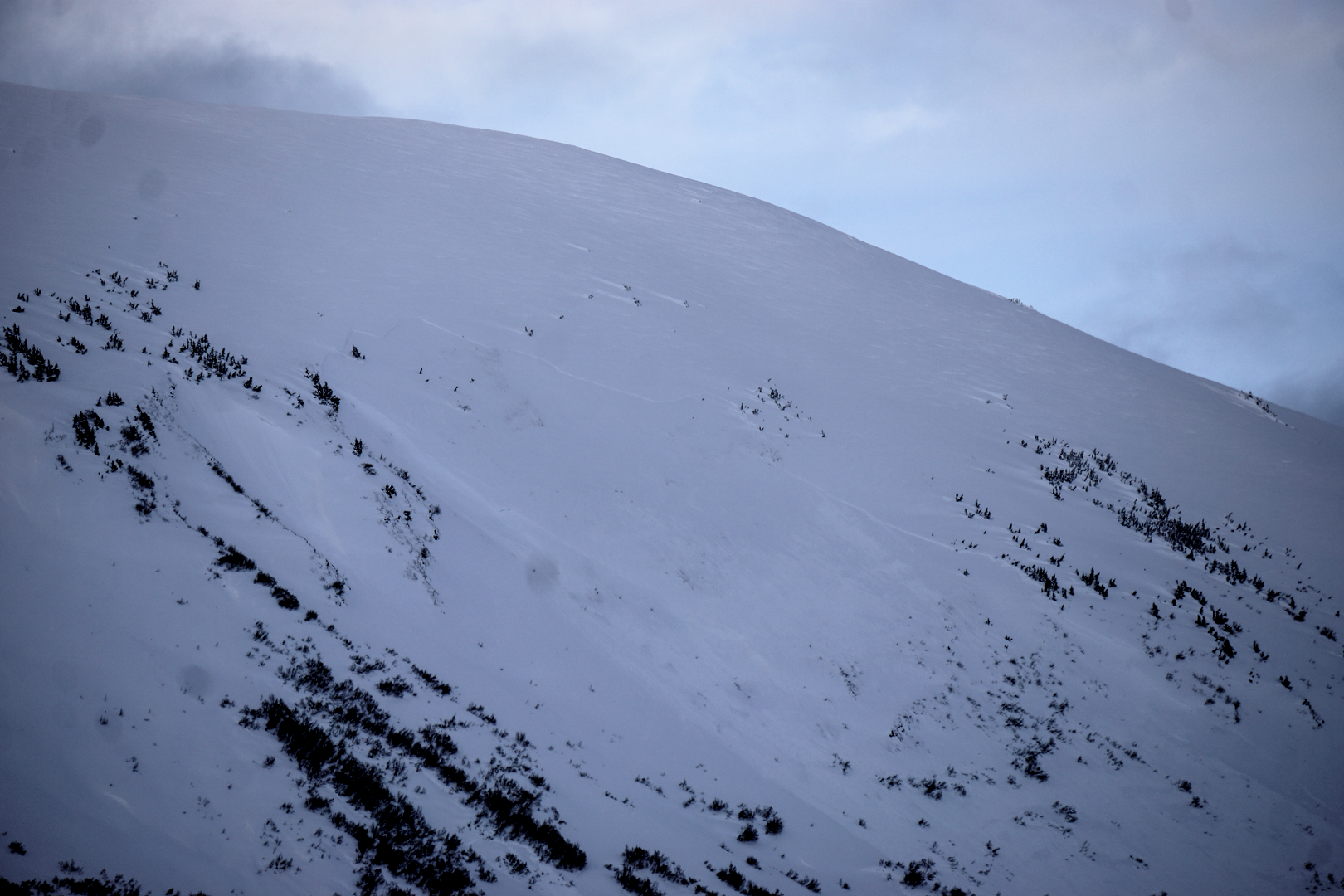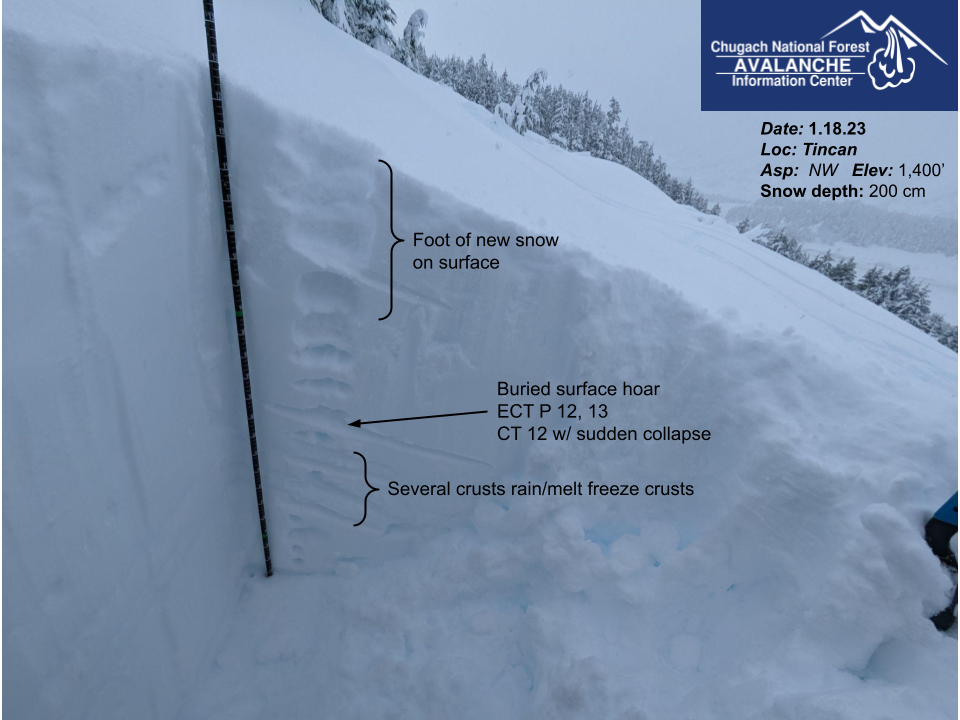Turnagain Pass
|
|
The avalanche danger is HIGH above 2500′ today. Strong winds over the past 24 hours have been transporting snow onto buried weak layers that are likely to produce natural avalanches and very likely to produce human triggered avalanches 1-3’+ deep. It is also possible to trigger a very large avalanche on a buried weak layer 3-6′ deep. Travel in avalanche terrain is not recommended.
Below 2500′ the avalanche danger is CONSIDERABLE. Human triggered avalanches 1-3′ deep releasing on buried weak layers are likely and we have seen several recent avalanches on forested low elevation and low angle slopes. Remote triggering an avalanche from low angle terrain onto surrounding steeper terrain is also possible with these buried weak layers.
SEWARD/LOST LAKE: This area is expected to receive higher snowfall totals (6-12″+) than our forecast area over the next 24 hours. Avalanche danger will increase rapidly with new snowfall and wind, and buried weak layers could become active again. We recommend very conservative terrain selection and avoiding avalanche terrain altogether if you see any red flags.
If you have done a Rec 2 avalanche course already, Alaska Guide Collective has spots open on their Rec 2 Refresher course. Join them to refresh your knowledge this Saturday and Sunday. Jan 21-22. alaskaguidecollective.com/avalanche
Forecaster Chat #2: Join us at the Girdwood Brewing Co. from 5:30-7:00 p.m. Tonight! CNFAIC forecaster Andrew Schauer will open the night with an overview of the state of the snowpack, followed by a discussion on how safe terrain management changes depending on the type of avalanche problem at hand. More details here.




